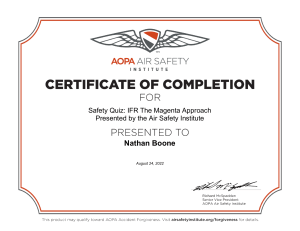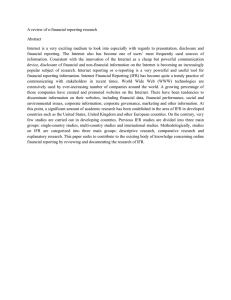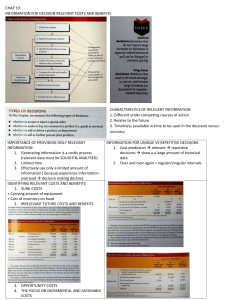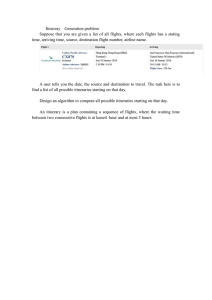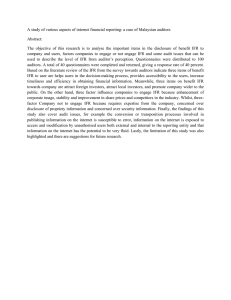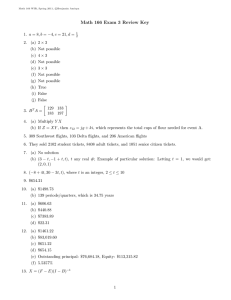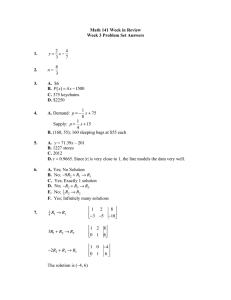Airspace Classification: Types, Regulations, and Flight Rules
advertisement
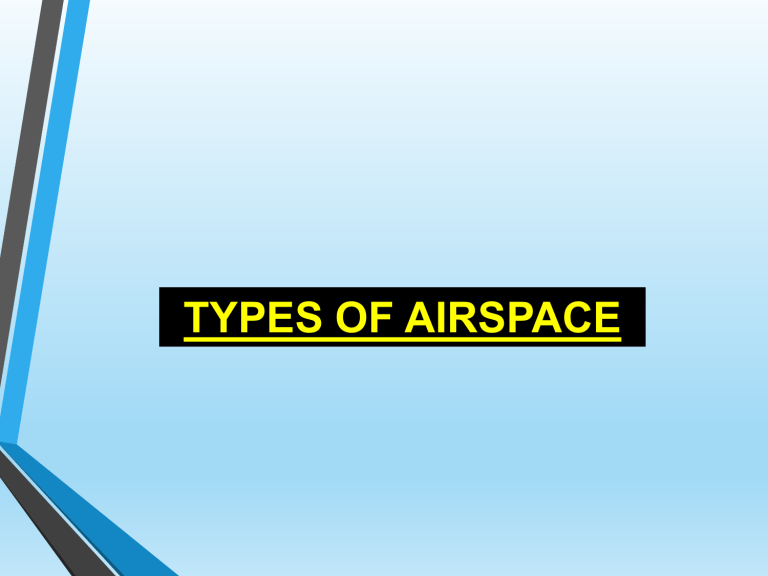
TYPES OF AIRSPACE DEFINITIONS REFER: FLIP I Aerodrome traffic zone (ATZ) : An airspace of defined dimensions established around an aerodrome for the protection of aerodrome traffic. Control Zone : A controlled airspace extending upwards from the surface ofthe earth to a specified upper limit. Control Area :A controlled airspace extending upwards from a specified limit above the earth. CLASS A Applicable to designated airspaces in terminal control area, control area and control zone. IFR flights only are permitted, all flights are provided with air traffic control service and are separated from each other. CLASS A • IFR flights only • Separation between all aircraft provided • Air traffic control service provided • Speed limitation not applicable • Continuous two-way Yes CLASS B Applicable to designated airspaces in terminal control area, control area and control zone. IFR and VFR flights are permitted, all flights are provided with air traffic control service and are separated from each other. CLASS B • IFR and VFR flights • All aircraft • Air traffic control service • Speed limitation not applicable • Continuous two-way :Yes CLASS C Designated airspace within controlled airspace is classified as Class C. IFR and VFR flights are permitted, all flights are provided with air traffic control service and IFR flights are separated from other IFR flights and from VFR flights. VFR flights are separated from IFR flights and receive traffic information in respect of other VFR flights. CLASS C IFR AND VFR FLIGHTS IFR • Separation - IFR from IFR, IFR from VFR • Air traffic control service provided • Speed limitation not applicable • Continuous two-way • ATC Clearance : Yes CLASS C IFR AND VFR FLIGHTS VFR • Separation – VFR from IFR • Air traffic control service for separation from IFR • VFR/VFR traffic information (and traffic avoidance advice on request) • Speed limitation : 250 kt IAS below 3050 m (10000 ft) AMSL • Continuous two-way • ATC Clearance : Yes CLASS D Airspace within controlled airspace is classified as Class D. IFR and VFR flights are permitted and all flights are provided with air traffic control service, IFR flights are separated from other IFR flights and receive traffic information in respect of VFR flights, VFR flights receive traffic information in respect of all other flights. CLASS D IFR AND VFR FLIGHTS IFR • Separation - IFR from IFR • Air traffic control service, traffic information about VFR flights (and traffic avoidance advice on request) • 250 kt IAS below 3050 m (1 000 ft) AMSL • Continuous two-way • ATC Clearance : Yes CLASS D IFR AND VFR FLIGHTS VFR • Separation - Nil • IFR/VFR and VFR/VFR traffic information (and traffic avoidance advice on request) • 250 kt IAS below 3050 m (10000 ft) AMSL • Continuous two-way • ATC Clearance : Yes CLASS E Airspace within ATS Route segment outside controlled airspace is classified as Class E. IFR and VFR flights are permitted, IFR flights are provided with air traffic control service and are separated from other IFR flights. All flights receive traffic information as far as is practical. Class E shall not be used for control zones. CLASS E IFR AND VFR FLIGHTS IFR • Separation - IFR from IFR • Air traffic control service and, as far as practical, traffic information about VFR flights advice on request) • 250 kt IAS below 3050 m (10000 ft) AMSL • Continuous two-way • ATC Clearance : Yes CLASS E IFR AND VFR FLIGHTS VFR • Separation - Nil • Traffic information as far as practical • 250 kt IAS below 3050 m (10000 ft) AMSL • R/T – NO • ATC Clearance : Yes CLASS F Designated Airspace within ATS Route segment outside controlled airspace is classified as Class F. IFR and VFR flights are permitted, all participating IFR flights receive an air traffic advisory service and all flights receive flight information service if requested. . CLASS F IFR AND VFR FLIGHTS IFR • Separation - IFR from IFR • Air Traffic Advisory Service; Flight Information Service • 250 kt IAS below 3050 m (10000 ft) AMSL • Continuous two-way R/T • ATC Clearance : No CLASS F IFR AND VFR FLIGHTS VFR • Separation - Nil • Flight Information Service • 250 kt IAS below 3050 m (10000 ft) AMSL • R/T - No • ATC Clearance : No CLASS G Airspace outside ATS route segment and outside controlled airspace is classified as Class G. IFR and VFR flights are permitted and receive flight information service if requested. CLASS G IFR AND VFR FLIGHTS IFR • Separation - Nil • Flight Information Service • 250 kt IAS below 3050 m (10000 ft) AMSL • Continuous two-way R/T • ATC Clearance : No CLASS G IFR AND VFR FLIGHTS VFR • Separation - Nil • Flight Information Service • 250 kt IAS below 3050 m (10000 ft) AMSL • R/T - No • ATC Clearance : No PROHIBITED AREA An airspace of defined dimensions above the land areas or territorial waters of India within which the flights are not permitted at any time under any circumstances. Such areas are designated as Prohibited Areas and are identified by the letter (P) preceded by two letter designator of FIR in which the area exists followed by a number e.g. VA(P)-2, indicates Prohibited Area No. 2 in Mumbai FIR RESTRICTED AREA An airspace of defined dimensions above the land areas or territorial waters of India within which the flight of aircraft is restricted. Restricted areas are marked on navigation Charts and are identified by the letter (R) preceded by two letter designator of the concerned FIR followed by a number e.g. VO(R)-81, i.e. Restricted Area No. 81 in Chennai FIR. TEMPORARY SEGREGATED AREA (TSA) An airspace temporarily reserved and allocated for the exclusive use of a specific user during a determined period, through which no other flights may pass. TSA can be considered as the flexible equivalent of Danger Area. TEMPORARY RESEREVED AREA (TRA) An airspace temporarily reserved and allocated for the specific use of a particular user during a determined period, through which other flights may pass with permission from Controlling Authority. TRA can be considered as the flexible equivalent of Restricted Area.
